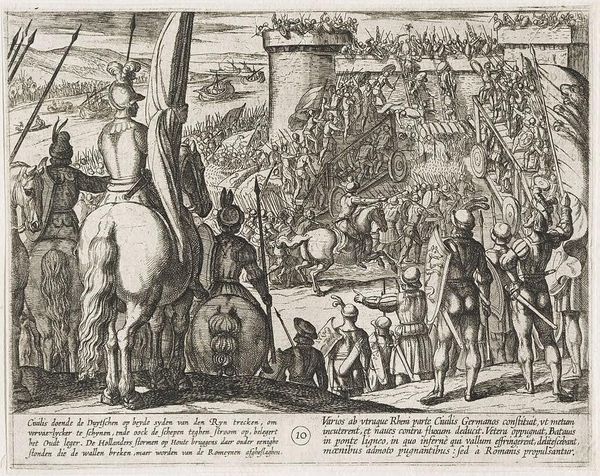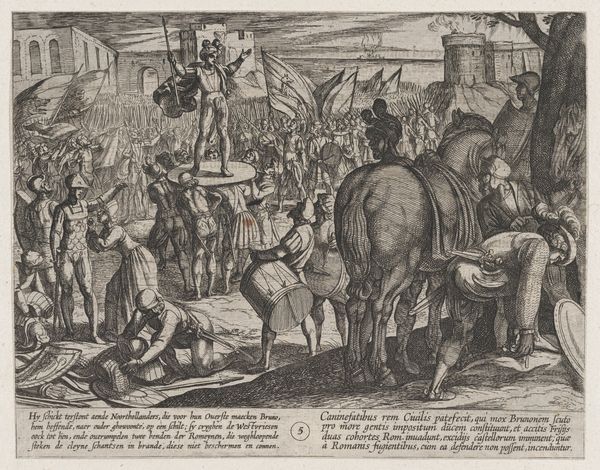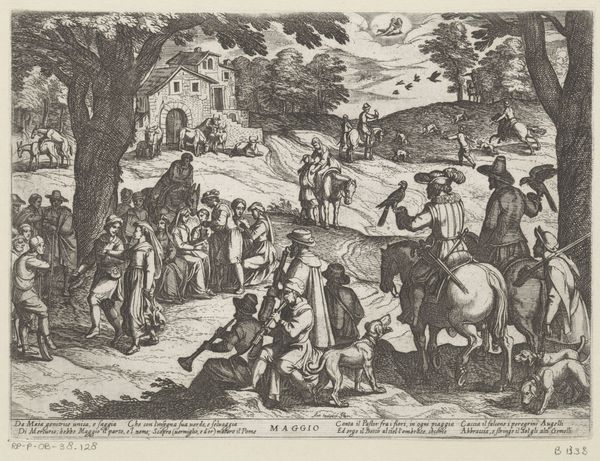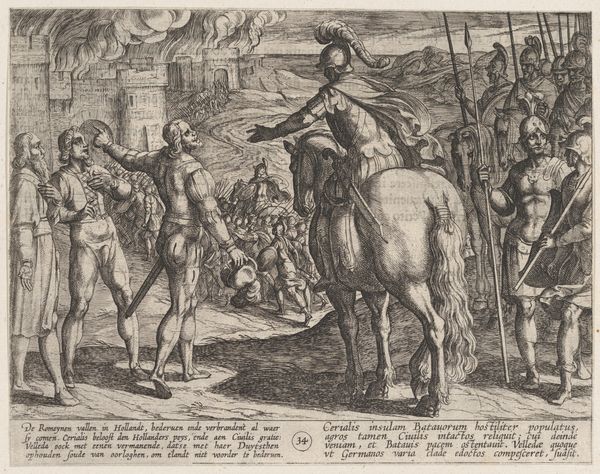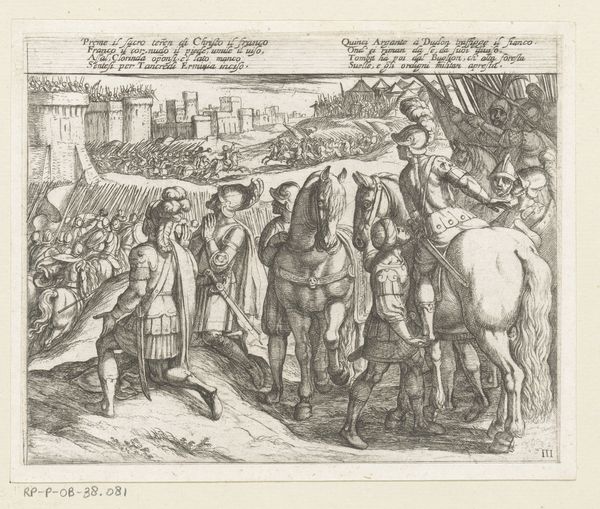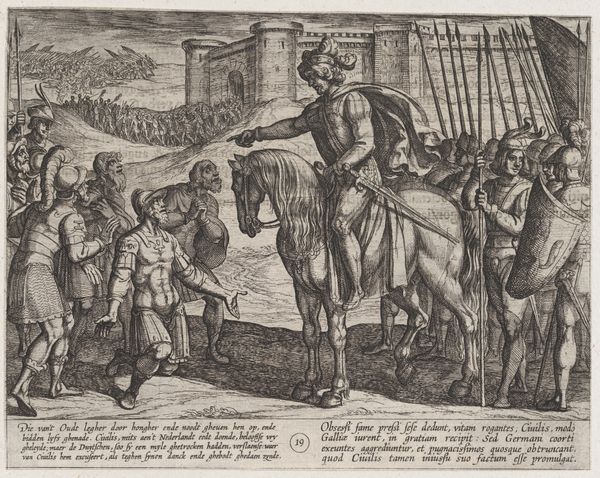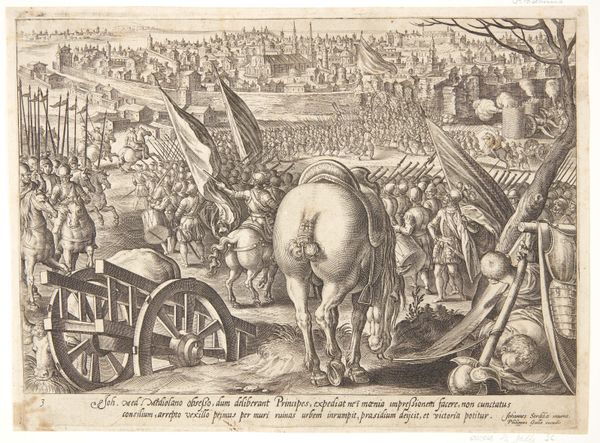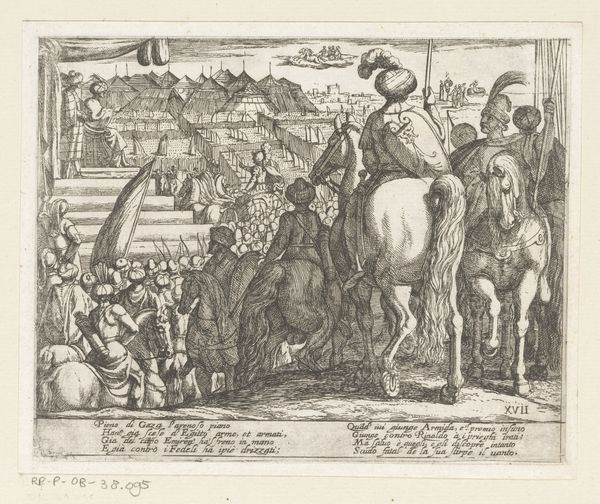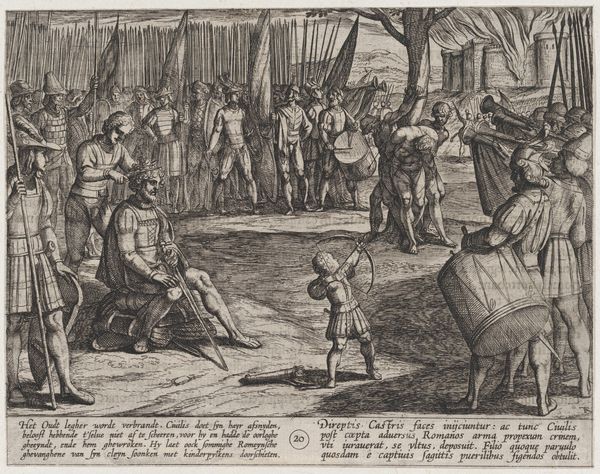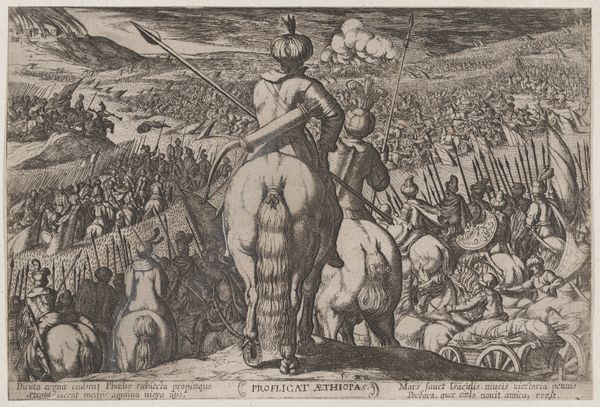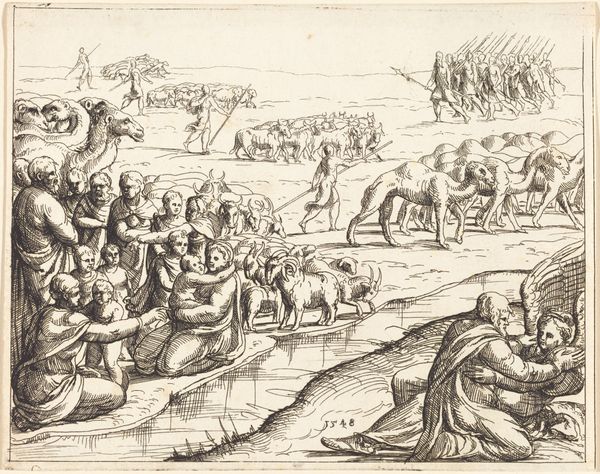
Plate 10: Civilis using Movable Wooden Bridges to Attack the Fortress, from The War of the Romans Against the Batavians (Romanorvm et Batavorvm societas) 1611 - 1612
0:00
0:00
drawing, print, etching, engraving
#
drawing
#
weapon
#
narrative-art
#
baroque
# print
#
pen sketch
#
etching
#
war
#
landscape
#
soldier
#
horse
#
line
#
history-painting
#
engraving
Dimensions: Sheet: 6 5/16 × 8 1/8 in. (16 × 20.6 cm)
Copyright: Public Domain
Antonio Tempesta created this print, *Plate 10: Civilis using Movable Wooden Bridges to Attack the Fortress,* sometime around 1600, using the technique of engraving. This was a quintessentially early-modern process, involving skilled labor to cut lines into a metal plate, which could then be used to produce many identical images. The material presence of the print is critical here. Its lines are precise and descriptive, yet also create a dense visual texture. Look closely, and you can almost hear the din of battle! That effect is partly due to Tempesta’s skillful rendering, but also to the inherent properties of the engraving process. The very act of cutting into the metal is aggressive, befitting the subject matter. Prints like this were made possible by the rise of a new urban, literate class, eager for information and entertainment. Inexpensive and easily disseminated, they played a key role in shaping public opinion, circulating stories of heroism and conflict. The print medium, therefore, wasn't just a means of artistic expression, but an integral part of the era's social and political landscape.
Comments
No comments
Be the first to comment and join the conversation on the ultimate creative platform.
